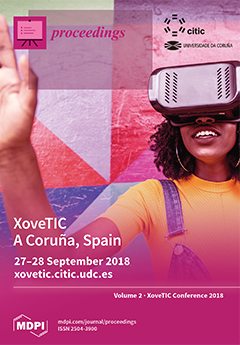Proceedings, 2018, XoveTIC 2018
XoveTIC 2018
A Coruña, Spain | 27–28 September 2018
Issue Editors:
Ignacio Fraga, University of A Coruña, Spain
Alberto Alvarellos, University of A Coruña, Spain
Maria Montero, University of A Coruña, Spain
Javier Pereira, University of A Coruña, Spain
Manuel González Penedo, University of A Coruña, Spain
Printed Edition Available!
- Issues are regarded as officially published after their release is announced to the table of contents alert mailing list.
- You may sign up for e-mail alerts to receive table of contents of newly released issues.
- PDF is the official format for papers published in both, html and pdf forms. To view the papers in pdf format, click on the "PDF Full-text" link, and use the free Adobe Reader to open them.



